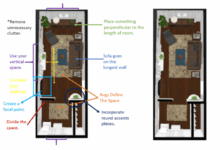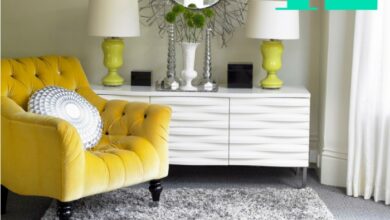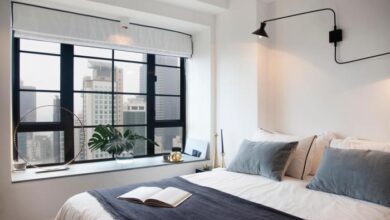How To Choose Furniture That Fits Your Lifestyle
How to Choose Furniture That Fits Your Lifestyle is a journey into the heart of your home. Each piece of furniture tells a story, reflecting who you are and how you live. Selecting the right furniture is not just about aesthetics; it’s about creating a space that nurtures your daily routines, embraces your hobbies, and welcomes your loved ones.
In this guide, we will explore essential factors such as assessing your lifestyle needs, understanding your space, and determining the functionality of furniture. Whether you have a bustling family life or a quiet retreat, this guide will help you make informed choices that resonate with your everyday experiences.
Identify Your Lifestyle Needs
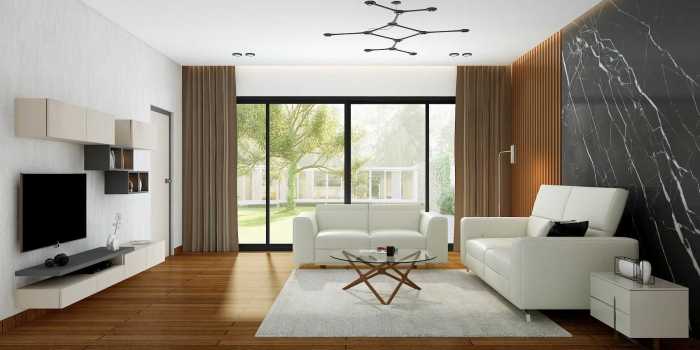
Source: pouted.com
Understanding your lifestyle is the first step in choosing furniture that complements your daily routine and personal preferences. By assessing your daily activities and how your living space accommodates them, you can make informed decisions that enhance both functionality and aesthetics in your home. Your lifestyle significantly influences the type of furniture you need. Consider various factors such as the size of your family, the presence of pets, and your hobbies.
Each of these aspects plays a crucial role in determining not just the style of furniture, but also its functionality and durability. For instance, a family with young children may prioritize sturdy, easy-to-clean materials, while someone who works from home might need a comfortable, ergonomic office setup.
Key Lifestyle Factors
When evaluating your lifestyle needs, it’s essential to consider the following factors that dictate your furniture choices:
- Family Size: Larger families require more seating and storage solutions. A sectional sofa may work better for a bustling household than a single loveseat.
- Pets: If you have pets, look for materials that are durable and resistant to stains. Fabrics like leather or microfibre can be more suitable for homes with furry friends.
- Hobbies: Your hobbies can dictate specific needs. An artist may need a dedicated workspace with ample storage for supplies, while a book lover may require more shelving and comfortable reading chairs.
- Entertaining: If you frequently host gatherings, consider furniture that encourages interaction, such as a large dining table or versatile seating options.
- Work-from-Home Needs: With the rise of remote work, creating a functional office space at home has become vital. An ergonomic desk and chair are essential for long hours of productivity.
The furniture you choose should not only reflect your personal style but also enhance your daily routines. By considering these lifestyle factors, you can select pieces that bring comfort and efficiency to your home, ultimately making it a true reflection of who you are.
Understand Space Constraints
When choosing furniture, understanding the limitations and opportunities of your space is crucial. Without measuring and considering the dimensions of your rooms, even the most beautiful pieces can overwhelm or underwhelm your living environment. Thoughtful consideration of your space not only ensures functionality but also enhances the overall aesthetic of your home.Measuring available space accurately allows you to make informed decisions about the furniture that best matches your needs and preferences.
It is also essential to recognize that different room layouts can significantly influence how you arrange your furnishings. By understanding how to maximize space, especially in smaller or oddly shaped rooms, you can create a cozy and inviting atmosphere.
Measuring Available Space
Before buying furniture, take the time to measure your rooms. Accurate measurements help you visualize how new pieces will fit and interact with existing decor. Consider these steps to effectively measure your space:
- Use a tape measure to find the length and width of each room.
- Account for doorways, windows, and any architectural features that may impact placement.
- Consider the height of the room, especially for tall furniture like bookshelves or cabinets.
Measuring your space is the first step toward designing a room that feels balanced and harmonious.
Organizational Methods for Small Spaces
Maximizing space in small or awkwardly shaped rooms requires creativity and strategy. Here are some effective organizational methods to consider:
- Opt for multifunctional furniture, such as ottomans with storage or coffee tables that expand.
- Use vertical space by installing shelves or wall-mounted units, drawing the eye upward.
- Incorporate furniture that can be easily moved or adjusted to accommodate different activities.
Creative organization not only enhances functionality but also brings a sense of peace to smaller spaces.
Room Layouts and Furniture Placement
The layout of your room can drastically affect how your furniture fits and functions. Different layouts may call for different arrangements. Consider the following common layouts and their implications for furniture positioning:
- Open-concept spaces benefit from defining areas through furniture placement, like using rugs to signify seating arrangements.
- Rectangular rooms often work best with long sofas along the longer walls, allowing for clear pathways.
- Square rooms can accommodate more varied arrangements, making it easier to create cozy conversation areas.
Adapting furniture placement to the room layout can create an inviting and functional space.
Determine Functionality and Purpose
In the quest for the perfect furniture, understanding its functionality and intended purpose is crucial. Choosing pieces that align with everyday needs not only enhances the living experience but also maximizes the use of available space. In today’s world, where many live in compact homes, the importance of selecting furniture that serves multiple purposes cannot be overstated.Multi-functional furniture is essential, especially in small spaces, where every square inch counts.
Such pieces allow for creativity and efficiency, transforming a living area into a versatile environment that can adapt to various needs. For instance, a sofa bed can serve both as a comfortable seating area during the day and transform into a cozy sleeping space at night. This adaptability is vital for making the most out of limited space.
Examples of Multi-Functional Furniture and Their Benefits
To truly appreciate the impact of multi-functional furniture, consider the following examples that serve dual purposes:
- Sofa Bed: A classic piece that combines seating and sleeping functionality, perfect for accommodating guests without requiring extra space.
- Storage Ottoman: This adds style while providing hidden storage for blankets or toys, doubling as a coffee table or extra seating.
- Folding Dining Table: Ideal for small dining areas, it can be expanded when needed and folded away to save space when not in use.
- Murphy Bed: A bed that folds into the wall, freeing up floor space during the day for other activities.
- Convertible Desk: A desk that can transform into a dining table or a craft station, ensuring functionality in a home office or study area.
Each of these pieces not only saves space but also offers unique benefits that adapt to varying lifestyles and needs. By evaluating the primary purpose of each room in a home, one can select the most appropriate furniture that caters to specific activities. In a living room meant for relaxation, a comfortable sofa that doubles as a bed accommodates guests efficiently.
A dining room that also functions as a workspace can benefit from a table that has extensions, allowing it to serve different purposes. Understanding the needs of each area ensures that the furniture chosen enhances both the utility and comfort of the space.
Choosing furniture that aligns with your lifestyle enhances both the functionality and aesthetics of your home.
Choose Appropriate Styles and Materials
Choosing the right furniture style and materials is essential in creating a harmonious living space that resonates with your lifestyle. The furniture you select should not only reflect your personal taste but also withstand the daily wear and tear of your household activities. This balance of aesthetics and durability is vital for establishing a warm and inviting environment at home.
Complementing Styles for Different Lifestyles
The style of furniture you choose can significantly enhance the overall atmosphere of your home. Various aesthetics speak to different lifestyles, shaping how spaces are perceived and experienced. Here are some furniture styles that align well with distinct lifestyles:
- Modern minimalist: Ideal for those who favor a clutter-free environment, focusing on clean lines and functional pieces.
- Rustic: This style brings warmth and charm, perfect for families who enjoy the comfort of natural materials and cozy spaces.
- Industrial: A great fit for urban dwellers who appreciate raw materials, exposed structures, and a trendy, contemporary vibe.
- Traditional: Suitable for those who seek timeless elegance, featuring rich woods and classic designs that evoke a sense of history.
- Eclectic: For creative individuals who love mixing styles, textures, and colors to showcase their unique personality.
Durable Materials Based on Usage Frequency
Selecting the right materials is crucial to ensure that your furniture lasts over time, especially in high-use areas. Different materials offer varying levels of durability and maintenance. Consider the following materials based on your typical usage:
- Leather: Known for its durability and easy maintenance, ideal for families with children or pets.
- Wood: Solid hardwoods like oak or maple provide longevity and can withstand the rigors of daily use.
- Fabric: Choose synthetic blends or treated fabrics for stain resistance, especially in high-traffic zones.
- Metal: Often used in industrial styles, metal is sturdy and can endure heavy usage without losing integrity.
Colors and Textures Impacting Room Mood
The colors and textures of your furniture can dramatically affect the mood of a room. Thoughtfully chosen palettes can evoke different feelings and enhance the functionality of your space. Here are some insights on how color and texture influence ambiance:
- Warm tones: Colors like reds, oranges, and yellows can energize a space, making it feel lively and inviting.
- Cool tones: Blues, greens, and grays tend to create a calming atmosphere, suitable for relaxation areas.
- Neutral tones: Soft beiges, whites, and grays provide a versatile backdrop, allowing for flexibility with accents and decor.
- Textures: Mixing smooth, soft fabrics with rougher, natural surfaces can create visual interest and tactile depth.
“Selecting the right materials and colors not only completes your aesthetic vision but also shapes the emotional experience of your space.”
Budget Considerations
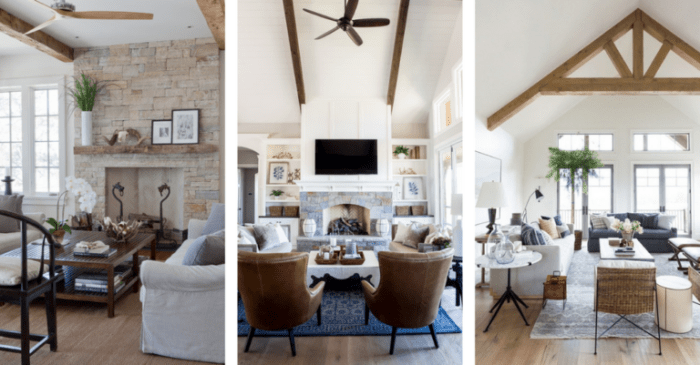
Source: nikkisplate.com
Creating a realistic budget for furnishing your home is essential for making informed decisions that align with your financial situation. A well-planned budget allows you to prioritize your needs without falling into debt or compromising on quality.When setting your budget, consider all elements involved in furnishing, including the cost of furniture, delivery, assembly, and any necessary accessories. It’s beneficial to create a detailed breakdown that reflects your financial capabilities.
Methods for Creating a Realistic Budget
Establishing a budget requires careful planning and consideration of various factors. Here are some effective methods to help you frame your budget accurately:
- Assess Current Finances: Evaluate your income, savings, and expenses to understand how much you can allocate toward furniture purchases.
- Prioritize Needs: List your furniture needs in order of priority to ensure that essential items are funded first.
- Research Prices: Spend time researching various furniture retailers to get a sense of average costs and available discounts.
- Set a Spending Limit: Decide on a maximum amount you are willing to spend for each item and stick to it.
- Account for Future Expenses: Consider potential future expenses, such as maintenance and replacement, when estimating your budget.
Investing in High-End Versus Budget Furniture
Choosing between high-end and budget furniture involves weighing the pros and cons of each. High-end furniture is often crafted from superior materials, which enhances durability and aesthetic appeal. Conversely, budget furniture is typically more affordable and may allow for a broader selection, but it may not last as long.
Investing in high-quality furniture can be seen as a long-term savings strategy, while budget options may require more frequent replacements.
Comparison of Costs and Durability
Below is a table comparing the costs and durability of different types of furniture:
| Type of Furniture | Average Cost (USD) | Expected Lifespan (Years) | Durability Rating |
|---|---|---|---|
| Solid Wood | 800 – 3000 | 15 – 25 | High |
| Particle Board | 100 – 500 | 3 – 5 | Low |
| Metal | 200 – 1500 | 10 – 20 | Medium |
| Leather Upholstered | 500 – 3000 | 10 – 20 | High |
| Fabric Upholstered | 200 – 1200 | 5 – 10 | Medium |
Sustainable and Ethical Choices
In today’s world, choosing furniture goes beyond aesthetics and comfort; it increasingly involves making sustainable and ethical decisions. As consumers become more aware of the environmental impact of their purchases, the demand for eco-friendly furniture options has surged. Selecting sustainable furniture not only enhances your living space but also contributes positively to the planet and its resources.Finding eco-friendly furniture options requires understanding the materials and production processes.
Look for certifications like Forest Stewardship Council (FSC) for wood products, which ensures responsible forestry practices. Additionally, consider furniture made from recycled materials, which minimizes waste and uses less energy in production. Companies producing furniture with low volatile organic compounds (VOCs) also prioritize health and the environment, as these compounds can contribute to indoor air pollution.
Criteria for Evaluating Sustainability
Assessing the sustainability of furniture materials involves several key criteria. Understanding these factors can help you make informed choices that align with your values.
- Material Source: Prioritize materials that are renewable, such as bamboo or reclaimed wood, which reduce the need for virgin resources.
- Production Processes: Evaluate whether the manufacturing processes are energy-efficient and involve minimal waste, which enhances overall sustainability.
- Certifications: Look for eco-labels and certifications indicating compliance with environmental standards, such as the Global Organic Textile Standard (GOTS) for textiles.
- Longevity and Durability: Choose furniture designed to last, as longer-lasting items reduce the frequency of replacement and the associated environmental impact.
Examples of Companies Known for Ethical Production Practices
Several companies are pioneers in sustainable and ethical furniture production, setting standards for the industry. These brands focus on eco-friendly materials, ethical labor practices, and sustainable manufacturing processes.
- West Elm: This company is recognized for its commitment to sustainable sourcing, offering a range of products made from reclaimed and sustainably harvested materials.
- IKEA: Known for its affordability, IKEA is increasingly incorporating sustainable practices, including a goal to make all its products using renewable or recycled materials by 2030.
- Joybird: This furniture company specializes in customizable pieces made from sustainable materials and offers a lifetime warranty, emphasizing durability.
- Greenington: This brand focuses on bamboo furniture, which is a highly renewable resource, and promotes environmentally friendly manufacturing practices.
Personalization and Customization
Personalizing and customizing your furniture can transform your home into a reflection of your individual style and needs. Custom solutions allow for unique configurations that not only fit your space seamlessly but also speak to your personal taste. Whether it’s a handcrafted coffee table or a tailored sofa, customization offers more than just aesthetics; it creates a sense of ownership and connection to your living environment.Choosing custom furniture solutions has several benefits, especially for unique spaces that standard furniture cannot address.
Custom pieces can be designed to fit specific dimensions, especially in tricky layouts or irregularly-shaped rooms. This ensures that every corner of your space is utilized effectively without compromising on style. Moreover, custom furniture allows you to select materials, colors, and finishes that resonate with your personal style and complement your home’s decor.
Incorporating Personal Style into Furniture Choices
When selecting furniture, it’s essential to weave your personal style into every piece you choose. This can elevate the overall ambiance of your home and create a cohesive look that feels both inviting and authentic. Here are some ways to ensure your furniture reflects who you are:
Select Signature Colors
Choose furniture in colors that you love, which can enhance your mood and create a welcoming atmosphere. For instance, if you adore earthy tones, select wooden pieces or upholstery in shades of green and brown.
Mix and Match Styles
Don’t hesitate to blend different styles, such as modern and vintage. This approach adds character and tells a story about your journey and preferences.
Add Personal Touches
Incorporate accessories or details that represent your interests, like art pieces or decorative pillows that showcase your favorite patterns or themes.
Invest in Custom Pieces
Consider bespoke furniture that captures your unique vision. This can include a dining table designed to host family gatherings or a bookshelf that displays your cherished books and trinkets.
DIY Projects for Personal Touch
Engaging in DIY projects not only allows for personalization but also provides a fulfilling creative outlet. Handmade projects can infuse your furniture with character and charm. Below are some DIY ideas to personalize your furniture:
Reupholstering Chairs
Give old chairs a new life by reupholstering them with fabric that reflects your style. Choose patterns or textures that resonate with your decor theme, whether it’s floral, geometric, or solid colors.
Creating Custom Shelves
Build shelves that suit your space and display your favorite items. You can paint them in colors that match your walls or use reclaimed wood for a rustic touch.
Personalized Table Centerpieces
Craft unique centerpieces for tables using materials like glass, wood, or metal. Adding personal elements such as family photos or souvenirs can make them truly one-of-a-kind.
Hand-Painted Furniture
Transform a plain dresser or side table by painting it with your favorite colors or designs. This simple touch can dramatically change the look of the piece and the room itself.
Adding Stencils or Decals
Use stencils or decals to add artistic designs to furniture. This could range from inspirational quotes on a desk to delicate floral patterns on a cabinet.Incorporating these ideas into your home can create a space that feels uniquely yours, filled with memories and stories that make it truly special.
Maintenance and Care

Source: livingdesignsfurniture.com
Choosing furniture that aligns with your lifestyle goes beyond aesthetics; it also involves understanding how to maintain it. Selecting pieces that are easy to care for can save time, effort, and ensure longevity, allowing you to enjoy your space without the burden of constant upkeep. When evaluating furniture options, consider the maintenance requirements associated with various materials. Some materials are inherently more durable and easier to clean, while others may require special care or frequent upkeep.
A proactive approach to maintenance ensures your furniture will remain beautiful and functional for years.
Ease of Maintenance
Selecting furniture based on ease of maintenance can significantly enhance your living experience. Here are key points to consider when choosing furniture materials:
- Wood: Solid woods like oak or maple are generally easier to maintain. Regular dusting and occasional polishing can keep them looking fresh. Avoid placing them in direct sunlight to prevent fading.
- Upholstery: Fabrics such as microfiber or synthetic blends are stain-resistant and easy to clean. Look for removable covers that are washable for added convenience.
- Leather: While leather can be luxurious, it requires regular conditioning to prevent cracking. Wipe it down with a damp cloth and a suitable cleaner to maintain its luster.
- Metal: Metal surfaces are typically low-maintenance. A simple wipe with a damp cloth is often sufficient. However, prevent rust by ensuring they are kept dry and off damp surfaces.
Cleaning Tips for Different Materials
Understanding how to care for various materials helps in maintaining their beauty and functionality. Here are some specific cleaning tips for common furniture materials:
- Wood: Use a soft cloth for dusting and a mild wood cleaner for deeper cleaning. Avoid abrasive materials that could scratch the surface.
- Fabric: Vacuum regularly to remove dirt and debris. For stains, blot with a clean, damp sponge and mild detergent, avoiding excessive water.
- Leather: Use a leather conditioner every six months. Clean spills immediately with a soft cloth and avoid using harsh chemicals.
- Glass: Clean glass surfaces with a glass cleaner or a mixture of vinegar and water. Use microfiber cloths to avoid streaks.
Evaluating Longevity Regarding Maintenance Needs
When choosing furniture, understanding its long-term maintenance needs can provide insights into its potential lifespan. Consider the following points:
- Quality of Materials: Higher-quality materials often require less maintenance and are more resistant to wear and tear. Investing in well-made items can lead to savings in both time and money over the years.
- Construction: Well-constructed furniture with solid joints and quality finishes will typically withstand the test of time. Look for brands known for their craftsmanship.
- Usage Frequency: Consider how often you will use the furniture. Pieces used daily, like couches and dining tables, should be more durable and easier to clean compared to occasional-use furniture.
- Environment: The environment in which the furniture will be placed can impact its longevity. Humidity, sunlight, and exposure to pets or children should all be considered when selecting materials.
Choosing the right furniture involves not just a love for design but an understanding of the care it will require.
Conclusive Thoughts
As we wrap up this exploration on how to choose furniture that fits your lifestyle, remember that the right choices can turn any house into a home. From understanding your personal needs to making sustainable selections, every decision you make adds depth and warmth to your space. Embrace the journey of furnishing your home, and let each piece bring joy and comfort into your life.
Frequently Asked Questions
What should I consider first when buying furniture?
Start by identifying your lifestyle needs and how you use the space daily.
How do I measure my space for furniture?
Use a tape measure to find the dimensions of your room and any irregular areas to ensure a good fit.
Are multi-functional furniture pieces worth it?
Yes, they maximize space and provide versatility, especially in smaller homes.
How can I make my furniture choices eco-friendly?
Look for materials labeled as sustainable and consider brands that prioritize ethical production.
What is the best way to maintain my furniture?
Regular cleaning and following specific care instructions for different materials will extend the life of your furniture.

